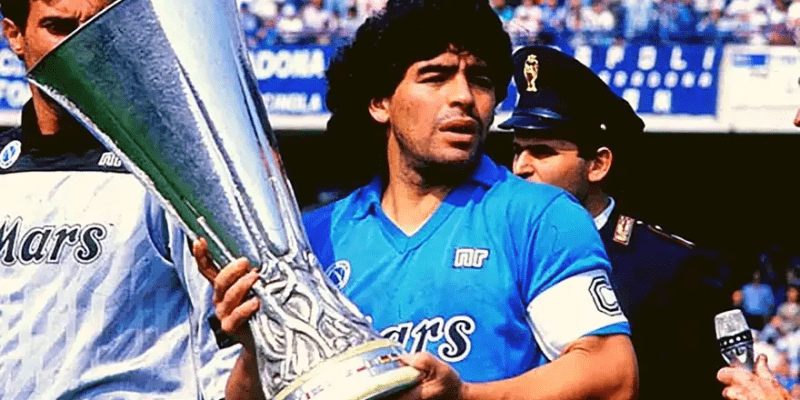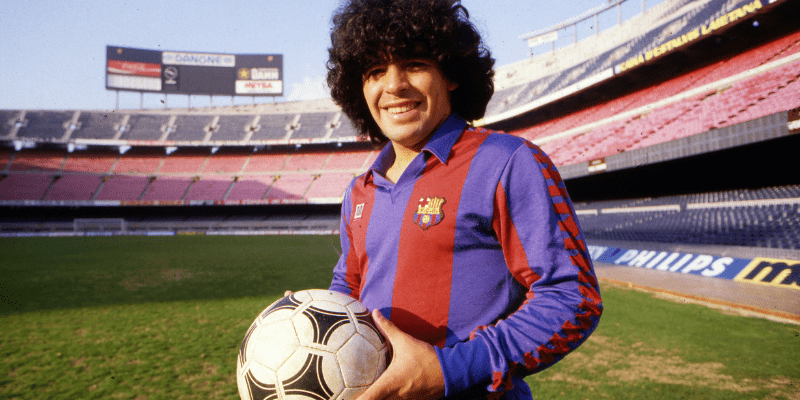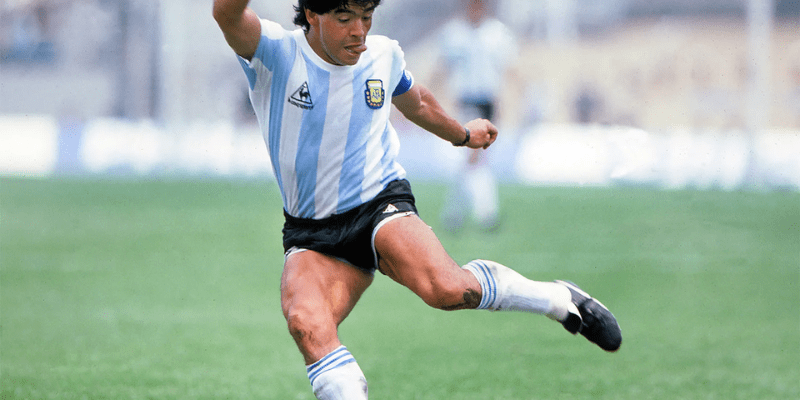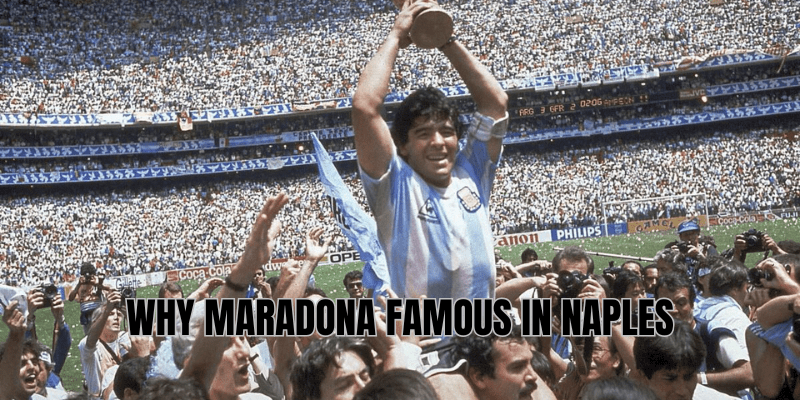He altered the destiny of a club—and a city. In Naples, Maradona famous in Naples is not just a phrase or a statistic: it’s a living myth, something you feel in the air, on the walls, in the chants. Over seven seasons at S.S.C. Napoli, El Pibe de Oro became more than a champion—he became the voice, pride, and spiritual symbol of a people long overlooked. In this article, TigerKick explores how and why Maradona is so deeply revered in Naples.
Arrival and cultural shock: the transfer that shook Italy

When Maradona left Barcelona in 1984 to join Napoli, it wasn’t just another big move—it was seismic. The transfer fee broke world records, and many questioned why the world’s most brilliant talent would risk the obscurity and instability of life in southern Italy. But for Naples, a city long marginalized in Italian politics and economy, Maradona represented hope, defiance, and belonging.
His unveiling drew 70,000–80,000 fans to Stadio San Paolo, chanting and celebrating as though a messiah had arrived. In that moment, he became a mirror of Neapolitan identity. He was a rebel, a genius, someone who embraced flaws and contradictions—and thus he was accepted not just as a star, but as one of them.
Sporting miracles: titles, records, and turning Napoli into a powerhouse

You can’t separate the legend. Why Maradona famous in Naples owes much to what he achieved on the pitch—achievements that rewrote the history of southern Italian football.
- First Serie A: In 1986–87, Napoli won its first-ever Italian league title, shattering the northern monopoly on success.
- Domestic double: That same season, they secured the Coppa Italia—an improbable feat for a club that had never tasted national glory.
- Second Scudetto: In 1989–90, Maradona led Napoli back to the summit.
- European success: In 1988–89, Napoli won its first major European trophy—the UEFA Cup—defeating Stuttgart in the final.
- Magic lineups and scoring feats: He became Serie A’s top scorer in 1987–88, and for years remained Napoli’s all-time leading scorer until that record was eventually broken.
These records were not just wins—they were declarations: Naples could compete. Naples could conquer.
A shared identity: social, political, and emotional bonds

His legend amplifies because his connection with Naples extended far beyond football.
Champion of the underdog
Northern Italy—Milan, Turin, Genoa—held most of the power and wealth in Italy’s football world. Naples, like much of the Mezzogiorno, felt undervalued, economically depressed, misunderstood. Maradona, with his fiery temperament, worn scars, and working-class roots, embodied that struggle. To Neapolitans, he was a warrior wearing their suffering and their hopes.
Murals, altars, and urban devotion
Walk through the Quartieri Spagnoli or along the narrow alleys, and you’ll find giant murals, candle-lit shrines, graffiti, and paintings in his honor. After his passing, fans left flowers, scarves, and messages at murals all across the city; the city later renamed its stadium the Stadio Diego Armando Maradona. Even the local CuMANA train station near the stadium was renamed in his memory. These are not tourist gimmicks—they’re living acts of worship, part of daily Neapolitan culture.
Emotional hero, flawed soul
Maradona’s life was messy: battles with addiction, controversies, suspensions. But in Naples, these flaws were woven into his legend—he was not a sanitized icon, but a human one. He fell, he struggled, he redeemed, and the people loved him for it. His triumphs were theirs; his tragedies felt like theirs too.
The legacy and modern echoes
Though Maradona left Napoli in 1991 under a cloud, his legacy has only grown stronger with time. The club’s resurgence—like the recent Serie A titles in 2023—are celebrated as continuations of his spirit. New players are measured in relation to him; his number 10 remains sacred. And the stadium where he once made history now carries his name, forever connected to the roar of Neapolitan fans.
Today, as Napoli fights at the top of Italy and Europe, Maradona’s shadow looms large: a reminder that giants can rise.
Final Thoughts
Why Maradona famous in Naples is not just about goals or titles—it’s about transformation, identity, and love. He came as a footballer, but became a conscience, a legend, an eternal symbol. In Naples, football is politics, faith, and art—and Maradona is its eternal saint.
If you’re curious to dive dee, or the murals that mark the city’s streets, TigerKick will guide you. Stay tuned for more on the legend, the history, and the living story of Diego Maradona in Naples.



